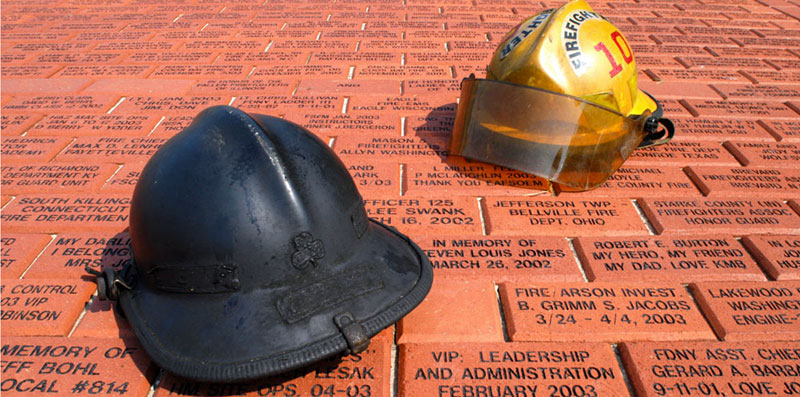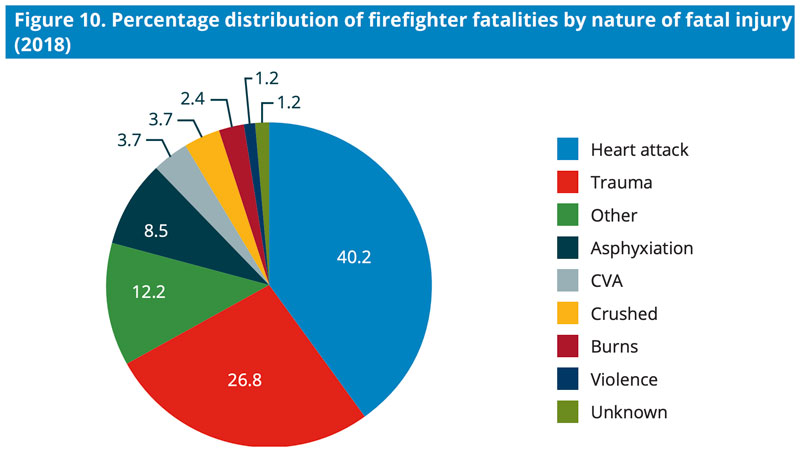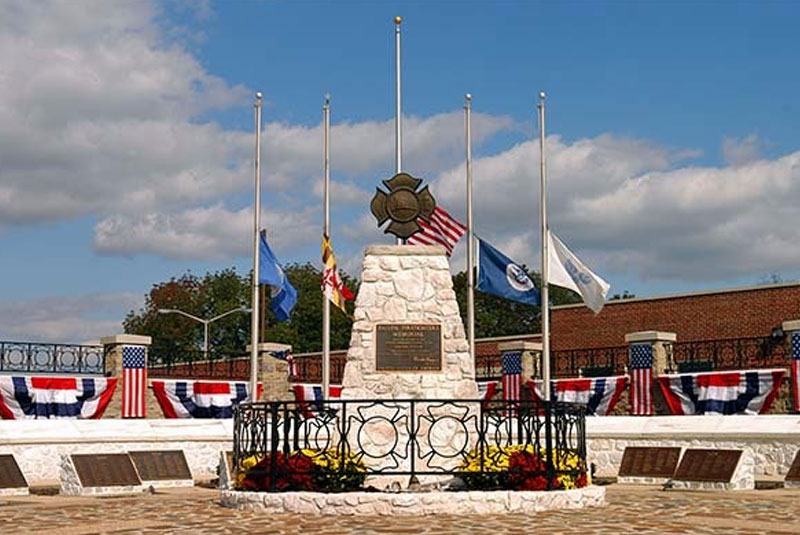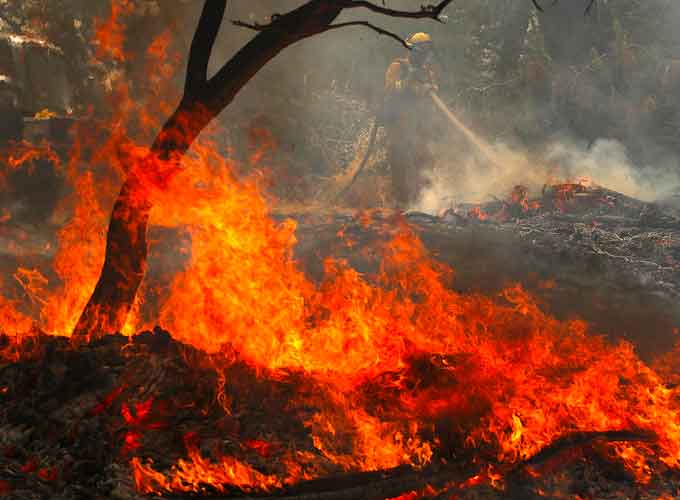
The 2018 U.S. Fire Administration’s annual report on firefighter fatalities in the United States is now available.
The report continues a series of annual studies began in 1986 by the USFA of on-duty firefighter fatalities in the U.S.
The specific objective of this study is to identify all on-duty firefighter fatalities that occurred in the U.S. and its territories in 2018 and to analyze the circumstances surrounding each occurrence.
The study is intended to help identify approaches that could reduce the number of firefighter deaths in future years.
Who is a firefighter?
For the purpose of this study, the term “firefighter” covers all members of organized fire departments with assigned fire suppression duties in all 50 states; the District of Columbia; and the territories of Puerto Rico, the Virgin Islands, American Samoa, the commonwealth of the Northern Mariana Islands, and Guam.

It includes career and volunteer firefighters; full-time public safety officers acting as firefighters; fire police; state, Native American tribal authorities and federal government fire service personnel; and privately employed firefighters, including employees of contract fire departments and trained members of industrial fire brigades, whether full time or part time.
It also includes contract personnel working as firefighters or assigned to work in direct support of fire service organizations (e.g., air-tanker crews).
Under this definition, the study includes not only local and municipal firefighters, but also seasonal and full-time employees of the U.S. Forest Service, the National Park Service, the Bureau of Land Management, the Bureau of Indian Affairs, the U.S. Fish and Wildlife Service, and other federal agencies, as well as state wildland agencies.
The definition also includes prison inmates serving on:
-
firefighting crews;
-
firefighters employed by other governmental agencies, such as the U.S. Department of Energy; military personnel performing assigned fire suppression activities; and civilian firefighters working at military installations.
(Take a peek inside. Courtesy of the Bismarck Larks and YouTube. Posted on Jul 26, 2018.)
On-duty firefighter deaths in 2018
Eighty-two firefighters died while on duty.
-
44 were volunteer firefighters.
-
33 were career firefighters.
-
5 were wildland firefighters.

What constitutes an on-duty fatality?
An on-duty fatality includes any injury or illness that was sustained while on duty and proves fatal.
The term “on duty” refers to being involved in operations at the scene of an emergency, whether it is a fire or nonfire incident; responding to or returning from an incident; performing other officially assigned duties, such as training, maintenance, public education, inspection, investigations, court testimony or fundraising; and being on call, under orders or on standby duty (except at the individual’s home or place of business).

An individual who experiences a heart attack or other fatal injury at home, while they prepare to respond to an emergency, is considered on duty when the response begins.
A firefighter who becomes ill while performing fire department duties and suffers a heart attack shortly after arriving home (or at another location) may be considered on duty since the inception of the heart attack occurred while the firefighter was on duty.

On Dec. 15, 2003, the president of the United States signed the Hometown Heroes Survivors Benefit Act of 2003 into law.
After being signed by the president, the act became Public Law 108-182.
The law presumes that a heart attack or stroke is in the line of duty if the firefighter was engaged in nonroutine, stressful or strenuous physical activity while on duty, and the firefighter became ill within 24 hours after engaging in such activity.
The full text of the law is available at https://frwebgate.access.gpo.gov/cgi-bin/getdoc.cgi? dbname=108_cong_public_laws&docid=f:publ182.108.pdf.
(Federal investigators released a report on 2018 deaths of two York firefighters in building collapse. Courtesy of WGAL and YouTube. Posted on Jun 12, 2019.)
The inclusion criteria for this study have been affected by this change in the law.
Before Dec. 15, 2003, firefighters who became ill as the result of a heart attack or stroke after going off duty needed to register a complaint of not feeling well while still on duty in order to be included in this study.
For firefighter fatalities after Dec. 15, 2003, firefighters will be included in this report if they became ill as the result of a heart attack or stroke within 24 hours of a training activity or emergency response.
Firefighters who became ill after going off duty, where the activities while on duty were limited to tasks that did not involve physical or mental stress, will not be included.
A fatality may be caused directly by an accidental or intentional injury in either emergency or nonemergency circumstances, or it may be attributed to an occupationally related fatal illness.
A common example of a fatal illness incurred on duty is a heart attack.
Fatalities attributed to occupational illnesses also include a communicable disease contracted while on duty that proved fatal when the disease could be attributed to a documented occupational exposure.
Firefighter fatalities are included in this report even when death is considerably delayed after the original incident.
When the incident and the death occur in different years, the analysis counts the fatality as having occurred in the year in which the incident took place.
There is no established mechanism for identifying fatalities that result from illnesses, such as cancer, that develop over long periods of time and may be related to occupational exposure to hazardous materials or toxic products of combustion.
It has proved to be very difficult to provide a complete evaluation of an occupational illness as a causal factor in firefighter deaths due to the following limitations:
-
the exposure of firefighters to toxic hazards is not sufficiently tracked;
-
the often-delayed, long-term effects of such toxic hazard exposures;
-
and the exposures firefighters may receive while off duty.

The 2018 report identifies all on-duty fatalities to increase understanding of their causes and how they can be prevented.
Topics covered include type of duty, cause and nature of injury, multiple fatality incidents, firefighter ages, time of injury, and incidents by state.
To Learn More, please download the free report, courtesy of the U.S. Fire Administration.
Also visit the National Fallen Firefighters Memorial.
(Firefighters from across the United States and Canada will be in Colorado Springs on September 21 for the annual International Association of Firefighters Fallen Fire Fighter Memorial. Courtesy of KOAA 5 and YouTube. Posted on Sep 21, 2019.)


















